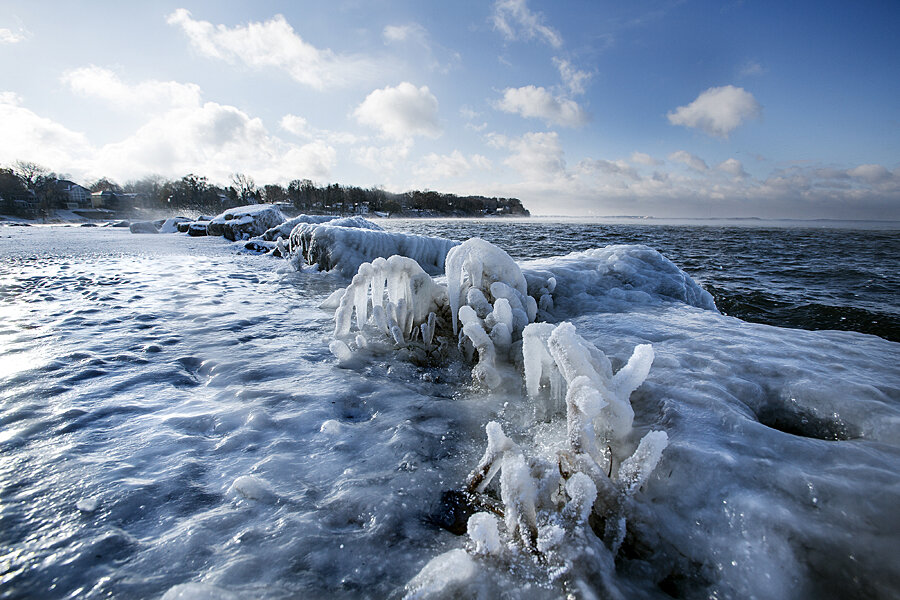Winter is coming. Is US energy ready?
Loading...
As they say in Game of Thrones, “winter is coming.”
In the popular TV series, winter carries a foreboding connotation, but in the real world, the icy fingers of Jack Frost can be a veritable bounty for natural gas investors – who know the market for natgas is heavily weather-dependent.
Take last year, for instance. In January 2014, a blast of freezing-cold Arctic air descended on North America, causing demand for the home-heating and industrial fuel to skyrocket. The “polar vortex” resulted in seven out of the 10 biggest demand days on record for natgas; last January, 241 billion more cubic feet than any other month on record were consumed, according to Bentek, a unit of Platts.
Of course, higher consumption had the predicted effect on prices. Between November 2013 and March 2014, the price of natural gas soared 67 percent. Investors who saw the opportunity in the unusually cold weather by investing in natural gas futures booked some handsome profits. The question is, will it happen again this year?
While no-one can accurately predict the weather, judging from the market as it currently stands, a repeat of 2014's polar vortex-effect is unlikely.
A shock of cold weather earlier this month briefly whisked natgas over $4.50 per million BTU, a four-month high. But the price rapidly fell to its normal $3 to $4 dollar range, as the forecast for wintry weather in the U.S. eased.
Analysts say the price also dipped because natgas prices are closely correlated with the oil price, which has been falling alongside prices of heating oil and unleaded gasoline.
Looking ahead, it appears that while more cold air is likely to settle in as winter advances, that's already been priced into the market, at least in the short term.
"Another impressive cold blast will impact much of the eastern U.S. early next week with widespread sub-freezing temperatures and areas of snowfall. This doesn't appear to interest the markets as they are more focused on what happens late next week and beyond, which is a transition to milder U.S. weather systems as a strong Pacific jet stream crashes into the western U.S.," Natgasweather.com reported last Thursday.
In other words, don't expect a repeat of that $4.50 mmBTU spike.
And then there's supply.
During the winter of 2014, inventories of natural gas held in storage were drawn down significantly to meet demand, but over the summer, producers have been busy directing new gas to storage facilities in preparation for the winter draw-downs.
The Energy Information Administration provides weekly data on natural gas storage levels, and according to the latest report on Friday, the previously tight gas market has loosened up quite a bit. The EIA said natural gas inventories rose by 40 billion cubic feet, although they remain about 6.2 percent below a five-year average.
The EIA thinks the 3.6 trillion cubic feet (tcf) of gas in storage when the “U.S. heating season” kicked off in November will be enough to sustain the market through a “normal” winter.
Barring the kind of cold snap North America saw last winter, the EIA expects inventories to be drawn down to 1.562 tcf by the end of next March, Platts reported last week. Compare that to a skimpy 857 billion cubic feet of gas left in storage at the end of March 2014, the lowest level since 2003.
So what does it all mean for prices? The EIA expects the Henry Hub spot price to average $3.97 mmBTU in 2015, compared to $4.53 last winter.
"This price forecast reflects both lower expected heating demand and significantly higher natural gas production this winter," the report states.
Winter is indeed coming, but it seems natural gas supplies are ready for it.
By Andrew Topf of Oilprice.com







